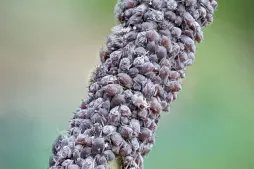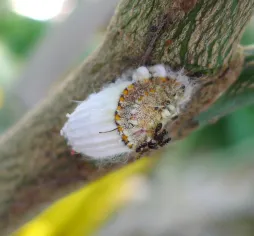Kalanchoe orgyalis, a rare and precious succulent
In Madagascar, among the rocky outcrops, on the driest soils, blooms a jewel: Kalanchoe orgyalis. This Crassulaceae offers its coppery leaves and golden flowers to those who discover it. But you don't have to go to the ends of the earth to admire its foliage. The plant can also be grown indoors.
How to recognize Kalanchoe orgyalis?
The Kalanchoe orgyalis is a succulent shrub which, in the wild, can reach a height of two meters and a spread of almost as much. Indoors and in pots, its size is more modest and it will fit in your living room.
The Kalanchoe orgyalis isn't the cousin of kalanchoe tomentosa for nothing! Like Kalanchoe tomentosa, it has an upright, branched stem. Beige, it is adorned with a fine down.
The spoon-shaped leaves are adorned with tiny golden hairs. The color of the leaf blades changes with exposure to the sun. Green, the upper surface displays coppery hues, while the underside is gray and silvery.
In autumn, golden-yellow flowers embellish the foliage. They grow in panicles on a 1-meter flowering stem.
Kalanchoe orgyalis is toxic if swallowed. All leaf parts contain bufadienolides. This substance is harmful to the nervous system and muscles. If you live with pets, keep the plant out of their reach.
Our maintenance tips
Although kalanchoe orgyalis can't stand the cold, they adapt very well to the dry air of our apartments, even in winter. Regular watering and a little care are all it takes to grow them indoors.
Watering
Keep the soil slightly moist. Water only when the substrate is dry on the surface, for one or two centimeters.
Water with non-calcareous water at room temperature, without soaking the soil.
Thirty minutes after watering, empty any stagnant water from the cup. This will keep the roots dry and prevent them from rotting.
Repotting
In spring, transfer your Kalanchoe orgyalis to a larger pot, so that it can continue to grow.
Get a pot with holes in it. Over time, foliage can become imposing. To prevent its weight from tipping the container over, choose a heavy model, in terracotta or ceramic for example. Line the bottom with pebbles.
This variety appreciates rich, well-drained soil. You can combine potting soil for flowering plants or heather soil with perlite or pozzolan. Pour in a layer of substrate, then plant your specimen in the center. Fill in with the rest of the mixture.
Water for the first time to eliminate air bubbles and encourage rooting.
Fertilization
You can stimulate the development of your plant during its growth phase, in spring and summer, with fertilizer.
Feed your Kalanchoe orgyalis with a special liquid fertilizer for flowering plants.
Prune
Remove wilted flowers. If you can't cut the flower stem with your hands, you can use pruning shears. Remember to clean your tool beforehand to prevent disease transmission.
Cutting
Cutting is carried out during the strong growth phase, generally in spring and early summer.
Locate a healthy, flowerless stem. Using a clean, sharp tool, cut off an eight- to ten-centimeter section. Remove the lower leaves and leave to dry for 24 hours before planting.
In a pierced pot, pour a layer of gravel or clay balls, followed by the substrate. To promote growth, choose a rich potting soil such as horticultural compost or seedling and planting soil. You can add sand for drainage. Plant your graft and cover the roots with soil.
Place your cutting in a bright spot away from direct sunlight.
Place your cutting in a bright spot away from direct sunlight.
Diseases / Threats
Information
| Family | Crassulaceae - Crassulaceae |
| Type | Kalanchoë - Kalanchoe |
| Species | Kalanchoe orgyalis - Kalanchoe orgyalis |
| Lifecycle | Perennial |
| Foliage | Evergreen |
| Exposure | |
| Substrats | |
| Planting method |
In pots |
| Categories | |
| Tags |
Beginner Flowery Fritillary Toxic |
| Origin |
South Africa |
| Hardiness (USDA) | 11a |
| Leaf color |
|
| Flower colors |
|
Discover plants from the same family
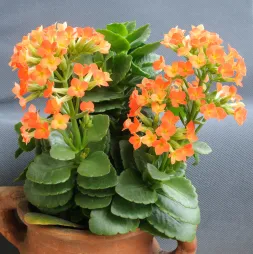
Blossfeld's Kalanchoe
Discover
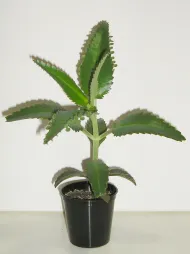
Kalanchoe of Daigremont
Discover

Thyrse flowered Kalanchoe
Discover
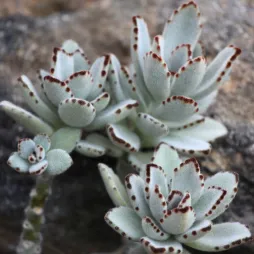
Panda plant
Discover












